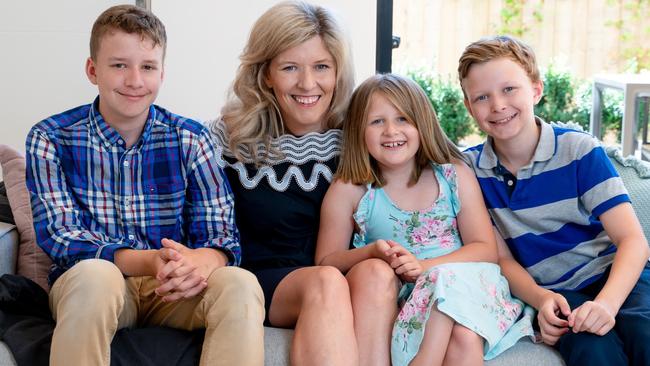New 10-year cancer plan to improve access to life saving treatment
A new 10-year national cancer plan is set to open up access to latest testing, trials and treatment centres no matter where Aussies live. See how it will work.

National
Don't miss out on the headlines from National. Followed categories will be added to My News.
Exclusive: Postcode prejudice will be scrapped to allow every Australian with cancer access to the latest testing, trials and treatment centres under a system overhaul.
A draft 10-year national cancer plan will on Thursday be launched by Health Minister Mark Butler, ensuring city and country patients receive the same high class cancer outcomes.
The revolution includes uniform genetic tests and screening programs, better access to clinical trials, and new state of the art comprehensive cancer centres in every state.
“We are developing the Australian Cancer Plan to improve outcomes for all Australians affected by cancer,” Mr Butler said.
Currently, seven in 10 patients survive cancer and Australia has the best treatment success rates in the world – but people in the bush and those with rare or less “sexy” cancers are missing out.
“The issue here is around the people who are not in the 70 per cent that get cured already. What we’re trying to do is get their outcomes up to as good as the others,” Cancer Australia CEO Professor Dorothy Keefe said.

To meet that goal within the next decade, the government will have to get more people screened for common cancers. Currently only half of those eligible for breast, bowel and cervical cancer take part in the free programs.
New cancer screening programs for lung cancer, melanoma and liver cancer will need to be introduced, and trials are already under way to genetically test young people for common cancer-causing genes so they can take preventive action.
Ninety per cent of preventable cancers are attributable to tobacco use, UV radiation, obesity, poor diet and alcohol consumption.
To improve survival rates, every cancer patient will be given an optimal care pathway which outlines what treatment they should get, where they should go next, what happens if their cancer returns, what follow-up testing and care they need, and what after care is available.
“We have some very good outcomes, but they’re not uniform across the country, and people get lost in the system. Sometimes things don’t happen as smoothly as they should,” Professor Keeffe said.

A nationwide network of comprehensive cancer centres will also be established in every state where patients can get access to breakthrough treatments and take part in clinical trials.
NSW already has the Chris O’Brien Lifehouse, Melbourne has Peter MacCallum Hospital, a new comprehensive cancer centre just opened in Adelaide, and others are under development in Brisbane and Perth.
Patients in regional areas and their doctors will be linked into these central centres of excellence, ensuring patients get the same state of the art care as patients living in the city.
Special cancer nurses will help patients navigate the health system and find the right treatments at the right time.
After surgery, a new cancer app will monitor a patient’s recovery and ask them to check in every day to report any problems which will be followed up by a nurse.
Some deadly cancers, like pancreatic and stomach cancer, miss out on research dollars and this would be addressed.
Deborah Henderson had to travel to London and fight her way into two clinical trials to save her life, after being diagnosed with the blood cancer Chronic lymphocytic leukaemia (CLL) 11 years ago.

“My experience as a patient has been extreme even though I live in Melbourne and I have access to the best doctors and the best hospitals,” she said.
She left her three children – then aged 7, 5 and 2 – at home with their father while she underwent seven months of treatment.
Four years later, when that treatment stopped working, she gained a place in a clinical trial of breakthrough new CAR T-cell therapy.
It was a rocky three weeks, with horrific fevers, but her cancer disappeared and, 18 months later, has not returned.
Ms Henderson wants all cancer patients to get the same high class care she accessed.
“I just was fortunate to get these treatments so I pushed for them, but people shouldn’t have to advocate for themselves the system should be working,” she said.
Originally published as New 10-year cancer plan to improve access to life saving treatment





